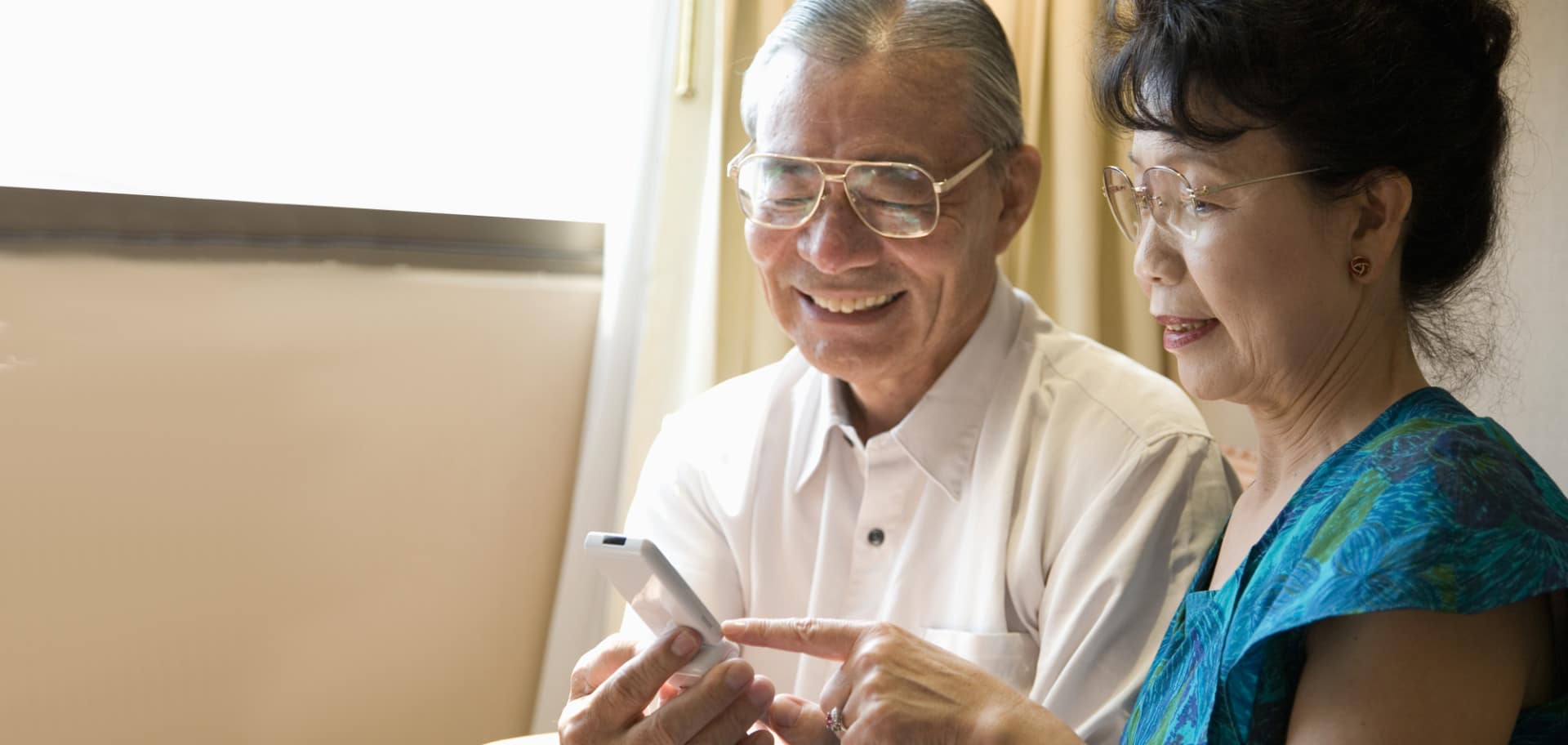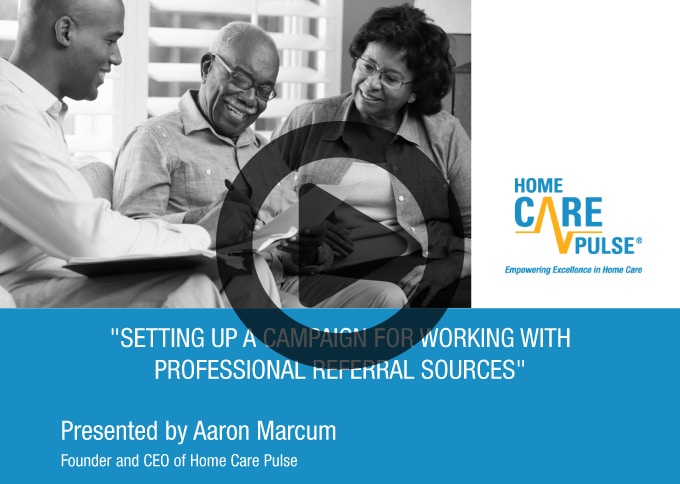
It’s safe to say that connecting with a home care agency’s target market today requires a strategy that is far more sophisticated than the customer acquisition tactics of years past. That’s because today’s older adult consumers and their loved ones are savvier and more in tune with their own preferences and choices. They are immersing in the digital culture more now than ever before.
Historically, the targeted older adult audience was reached primarily through networking with professional referral sources, trusted advisors, or friends who had experience with home care services. While this is still an accurate marketing scenario, the good news is that the search and selection behaviors of the older adult audience are evolving, and the changes stand to make reaching them directly easier and more attainable. This evolution is apparent in both how they live out later life, as well as in their adoption of technology.
The process of aging has traditionally been described as a continuum that involves retiring from the workforce, spending some years pursuing leisure activities, developing a chronic illness or sustaining an injury, and eventually moving into a care facility as care needs progress. Today, however, that life path is being transformed as home care becomes more widely known and accepted, and as technology advances the way we care for people as they age.
But just who is this new older adult generation? Recent research paints a picture of aging like we’ve never seen before.
- Older adults are still working: According to Pew Research Center 18.8% of Americans age 65 and older, nearly 9 million people, reported being employed full- or part-time, continuing a steady increase that dates to at least 2000.
- Older adults are making the most of aging: In a Pew Research poll, more than half of people age 65 and over who are retired report enjoying growing older and feeling less stress than ever before.
- Older adults are more tech-savvy than ever: Another Pew study shows us 74% of people age 50-64 own smartphones, 42% of people age 65+ own smartphones, and 51% of Americans own a tablet computer. In the year 2000, only 14% of adults 65 and older were online. Today, nearly 60% are online.
According to Jaana Remes, an economist and partner at the McKinsey Global Institute who spoke at the Aging 2.0 conference in San Francisco in 2016, “In healthcare, there is a clear shift in consumption, and it’s mainly from a consumer we don’t hear a lot about: the aging consumer. There are a lot of attitudes, of stereotypes, and they are still less well known. There is more equality, more diversity, they are more likely to be working later, more likely to be single, they are the most educated older generation yet, and they are much more likely to be tech savvy.”
All of these statistics have a deeper significance for home care marketing because one thing hasn’t changed about this new older generation: there’s still only one place that has their hearts – home. According to AARP reports, around 90% of adults age 65 and over still wish to remain at home as they age, which means that the potential home care target is identifiable, self-identifiable, and it’s important for agencies to market to these tech-savvy clients where they are. And where they are, and how to reach them, is increasingly online.
Just Press Play: Why Older Adults’ Digital Habits Matter When It Comes to Marketing
So, why do the digital habits of older adults and their families matter? It used to be that retirement meant pressing pause on the busy play button of life and taking the time to rest and relax. But today’s older adults aren’t pressing pause as often as they used to. Neither are their busy family members, who are often in desperate need of help caring for their loved ones. This is where tech savvy marketing comes in.
Consider the enormous growth in the popularity of online shopping over the last decade. It’s favored because it’s quick, convenient, and allows consumers to compare prices and get the best deals without having to drive from store to store or even GO to a store. The goods are delivered quickly and cost-effectively to one’s home. The same is true when researching care options. Both Baby Boomers and their senior parents have adopted mobile commerce. One in four mobile shoppers in the U.S. is over the age of 55, according to a Business Insider report. But when it comes to researching and actually purchasing care, it’s the adult children of aging parents who are often seen as the “gatekeepers.”
A recent study found that adult children of aging parents are involved in their parents’ care planning 73% of the time. Out of those adult children, it was the adult daughter 71% of the time. These adult children, members of the often over-committed and overworked sandwich generation, do not have the time or the inclination to talk to someone on the phone during their initial screening process. They want the data they’re searching for—pricing, specific information about a particular care issue, or reviews—as quickly and conveniently as possible.
These statistics and habits matter because they’re proof that, in order to reach your target audience today, your home care agency needs not just an online presence, but a meaningful digital marketing strategy.
Agencies need the following in their tech savvy marketing toolbox:
- A professionally designed, developed, and branded website that is easy to navigate and creates a positive user experience
- Regular content that is impeccably written and relevant to issues clients are facing and for which they’re seeking information
- Sharing that content on the website, e-newsletters, and social media channels so that the agency is able to reach a wider range of people
- A contact management program that collects emails from interested website and social media visitors, and provides ongoing communication targeted specifically to the interests of the potential client, moving him or her through an ever narrowing funnel
- Content that is helpful to targeted consumers and referrers and supports a sales strategy
- Ongoing and periodic SEO, targeted paid online advertising
- Testimonials from clients, clients’ family members, and referral sources displayed on the agency website
- Positive online reviews from clients, clients’ family members, and referral sources in media such as Google reviews, Facebook reviews, and others
- Proof that the agency is consistently collecting, reviewing, and taking actionable steps on client and caregiver feedback, such as participating with Home Care Pulse or another third-party customer satisfaction survey firm
As a 21st century operation, technology should be integrated into every aspect of your business, especially the care you provide. And this usage of technology combines with effective messaging to create a differentiation of your agency that is more appealing to this newer older and tech savvy crowd.
Just as more and more older adults are engaging with mobile technology, they are also more comfortable with technology used in the home. Offering home care technology that can help seniors stay safe, avoid hospitalizations, or re-hospitalizations, or even ease the mind of family caregivers provides some great messaging that your home care agency is enmeshed in delivering the best, most up-to-date resources to assist in aging in place.
The end goal that your services need to enable is independence. Loss of independence may be the biggest fear people have about their own trajectory into aging. Today’s older adults want to be able to live life on their terms, despite needing care and assistance. Agencies can address these concerns by offering:
- Medication reminder pill bottles/technology
- Personal emergency response monitors
- Transportation services
- Meal ordering and delivery
- Assistance with computers/social media for ease of communication with family and loved ones
- Motion detectors
- A family portal that allows family members to view care notes, especially as more families are spread out across the country
- The ability to offer split payment so family members can easily assist with client care costs, etc.
These devices and services provide a way to differentiate your agency as one that adheres to its clients’ needs and lifestyles with the use of top tier technology. Do not forget to have your high tech services front and center in your marketing plans and materials!
The new older adult generation is disrupting aging, and it’s up to home care agencies to stay on pace with their active digital lifestyles. This starts by reaching digitally active clients where they are and keeping them engaged as they receive care services.

About the Author
Merrily Orsini, President/CEO of corecubed
Merrily is considered a thought leader in the in-home care industry and is involved in numerous organizations, providing insight and advice. She is recognized nationally for her expertise in strategic marketing for aging care services. Orsini’s business ownership began with a geriatric care managed in-home care agency, a venture that garnered her the prestigious Ernst & Young Entrepreneur of the Year Award in 1996. She sold that business and founded corecubed in 1998, a digital marketing company that focuses on marketing aging care services using strategy, design, digital integration, branding, and industry-focused content. She is the past Chair of the Private Duty Homecare Association of America and has served on the boards of the National Association for Home Care and Hospice and the National Association of Geriatric Care Managers (now Aging Life Care Professionals).
Article originally published in the 2017 Home Care Benchmarking Study








Thanks for sharing this, Merrily. It’s not just marketing techniques, but the methods of caregiving that are changing too. Unless professional home care businesses invest in online marketing and training their staff in the latest tech tools for senior home care, they’ll be at the losing end.